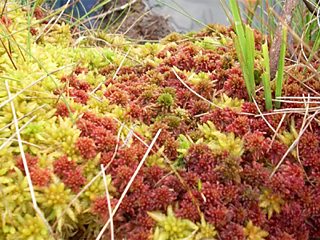Wetlands, those habitats so often neglected and overlooked are the focus of special attention this weekend with on February 2.
Wales has many types of wetlands including fens, bogs, grazing marshes, swamps, marshy grasslands and, of course, lakes, ponds and rivers.

A fly orchid - CCW
Some are only seasonally flooded or waterlogged, such as marshy grassland. Others, such as our peat-forming mires, are wet all year round.
But, without concerted action, they are all under threat. The looming prospect of drier summers means that managing wetlands to maintain their features is vital - not only for the wealth of wildlife that lives there but for everyone's quality of life.
Wetland habitats, in peak condition, can capture and store massive amounts of carbon that would otherwise be released into rivers and the atmosphere so wetlands have a key role to play in combating climate change.

Sphagnum moss - CCW
Wetlands also help purify our drinking water and can help control flood peaks, particularly relevant at the moment with regular flood alerts in Wales during the heavy rain.
Upland wetlands, in particular the blanket bogs which stretch all the way along the upland spine of Wales, provide dramatic wild open spaces and contribute much to the character of the landscape.
According to Dr Peter Jones, CCW Peatlands Ecologist: "There is some fantastic conservation work underway including a 拢3.5 million wetland restoration project covering Anglesey and Llyn Fens.
There is also much work on other National Nature Reserves such as and Cors Fochno in Ceredigion, Cors Crymlyn in Swansea, Fenns and Whixall Mosses near Wrexham and the magnificent upland mires of the Berwyn.
With concerted action and the great support of landowners, wetlands can, once again, become a haven for wildlife and great places to visit."
and have easy access along board walks for visitors.
